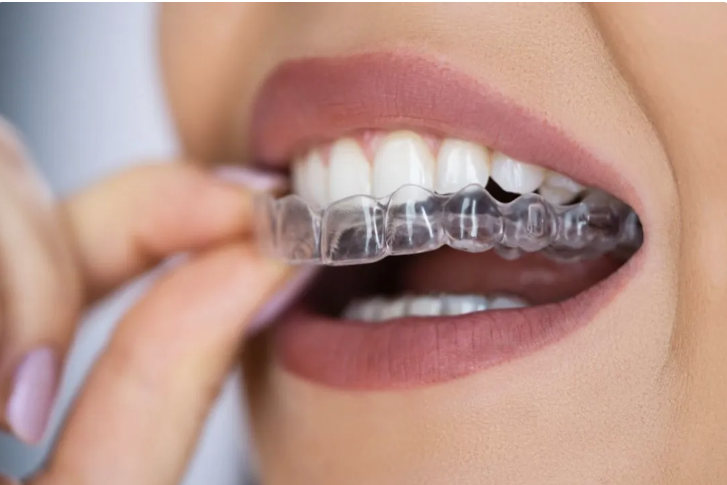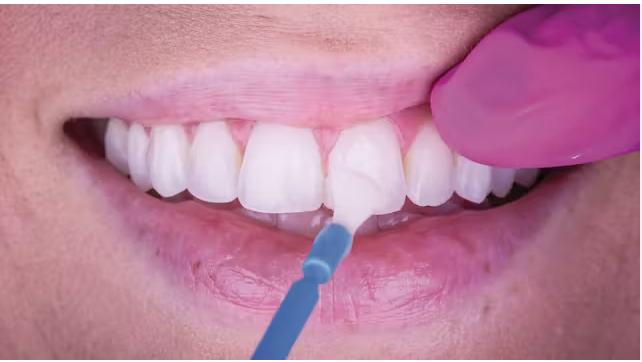
General and Family Dentistry

Exams and Cleanings
In our pursuit of optimal health, we highly advocate for and endorse proactive and preventive dental care. This approach not only contributes significantly to your oral health but also plays a pivotal role in promoting your overall well-being. During your dental exams and cleanings, both Dr. Alex and Dr. Heidi employ advanced diagnostic tools, including X-rays, to identify any potential issues before they escalate into major problems.
X-rays are an essential part of modern dentistry, allowing us to see beyond what's visible to the naked eye. These images are crucial for uncovering hidden dental concerns such as cavities, gum disease, or even impacted teeth. We understand that concerns about radiation may arise, but it's important to note that the level of radiation exposure from dental X-rays is minimal, lower than the amount of radiation you receive from natural sunlight on a daily basis.
Our commitment is to ensure your dental care is not only effective but also comfortable. If you experience any anxiety in the dental chair, please don't hesitate to inform us. We can provide you with a calming tablet to take before your appointment, ensuring your experience is as stress-free as possible. Your peace of mind and well-being are of utmost importance to us as we work together to safeguard your dental and overall health.
Cosmetic and Restorative
Teeth whitening
Experience the transformative power of our in-office whitening, delivering stunning results in just 20 minutes – perfect for your busy lifestyle. For those seeking a truly bespoke smile, our 'Smile Perfected' options offer a personalized approach. We'll collaborate with you to craft a plan that highlights your unique beauty. Schedule your quick and effective appointment today and unlock your most confident smile!


Dentures
Dentures are natural-looking replacement teeth that are removable.
Our goal is to create beautiful, healthy smiles in all regards. Personalized dentures can provide confidence, comfort, and peace of mind. We create one-of-a-kind dentures that feel good and look natural.
Full dentures are given to patients who have had all the natural teeth removed.
Partial dentures are created for patients with tooth loss that still maintain some of their natural teeth. They are attached to a metal frame that is connected to your natural teeth and are a removable alternative to bridges.
Implant dentures are dentures that are anchored by implants. This option can be a solution for patient requiring dentures who have a certain amount of bone loss. The implants can help keep the dentures in the proper position for optimal function.
Bonding
Tooth bonding is one method of repairing discolored, crooked, or slightly chipped teeth. The bonding process uses a white filling geared to match the tooth. Depending on the location and extent of decay, bonded fillings can often be used instead of silver fillings, contributing to a more natural appearance.
Bridges
Bridges are a replacement for missing teeth. Unlike dentures, bridges are fixed and not removable. They are secured to your existing natural teeth. A variety of materials can be used for bridges – gold, alloys, porcelain, or a combination of these materials.

Fluoride
Fluoride, a natural mineral, plays a crucial role in strengthening tooth enamel and preventing tooth decay. Our experienced dental team can provide tailored fluoride treatments to patients of all ages, helping to fortify your teeth and reduce the risk of cavities. Whether you're a child building a strong foundation for lifelong oral health or an adult looking to maintain your beautiful smile, our fluoride treatments are a safe and effective way to ensure your teeth stay strong and healthy. We believe in the power of prevention, and fluoride treatments are just one of the many ways we prioritize your dental well-being.

Root Canals
At our office, we understand that the mere mention of a root canal can sometimes cause anxiety. However, rest assured that our skilled team is here to make this essential procedure as comfortable and pain-free as possible. Root canals are a specialized service we offer to address infections deep within the root of the tooth. When an infection takes hold in this area, it can lead to severe pain and potentially jeopardize the tooth's integrity. Using advanced techniques and technology, our experienced dentists will gently remove the damaged or infected pulp, alleviating your pain and preventing the need for extraction.
With our commitment to your well-being and a gentle touch, you can trust us to address and eradicate these root infections, restoring your oral health and preserving your natural smile. If you're experiencing tooth discomfort or have concerns about a potential root canal, don't hesitate to contact us. We're dedicated to providing top-notch dental care, and root canals are just one of the many ways we ensure your smile remains healthy and beautiful.

CEREC®
CEREC® is a technology for restoring damaged teeth.
CEREC®:
-
Strengthens teeth
-
Improves the appearance of the teeth
-
Is completed in a single visit
-
Is metal-free
-
Uses high-grade ceramic material, compatible with the mouth’s natural tissue
Using a 3D imaging camera, we take a photo of your tooth. CEREC's proprietary software designs your restoration according to your specific tooth's precise form and function. Next, diamond burs shape your restoration from a piece of ceramic. Finally, the ceramic restoration is bonded to your tooth using adhesive dentistry.

Clear Aligners
Discover the discreet way to straighten your teeth with our clear aligners.
Using a scanner, we create fast, precise 3D digital images of your teeth, create a customized treatment plan, and even provide a preview of your new smile and position of teeth.
Hydroxyapatite
Dental hydroxyapatite varnish, a biomimetic material, effectively remineralizers enamel and dentin, repairing early cavities and preventing further decay. 1 It forms a protective layer, reducing sensitivity and boosting resistance to acid attacks. Well-tolerated and biocompatible, it's a valuable tool for all ages, promoting stronger, healthier teeth and lowering the risk of decay.

Dental Implants
For an added layer of security and independence of structure, dental implants are sometimes used in replacing missing teeth. Different from dentures and bridges, which are not fixed to the bone, implants feel and behave more like natural teeth. Bridges have an expected lifespan of 7-10 years. With proper care and maintenance, implants can typically last much longer.
Our implant services include:
Computer-Enhanced Treatment Planning:
Ensuring a thorough, custom experience, we use specialized software to evaluate your dental CT scan for bone quality, quantity, and location.
Implant Maintenance:
Being vulnerable to the same plaque and tartar as teeth natural teeth, implants
need to be regularly examined and cleaned by your dental team.
Implant Site Development:
When a tooth needs to be removed due to infection, it is not uncommon to have
lost bone around the infected tooth. In these cases, various types of bone
grafting can be done at the same time the tooth is removed to facilitate the
placement of a dental implant at a later date.
Denture Implant:
Implant retained dentures provide a stable, non-removable option to traditional dentures. They are less likely to shift in the mouth while eating, drinking, and speaking. With this method, the dentures are anchored to the jaw with implants.

PerioProtect®
The Perio Protect Method® is a minimally invasive, non-surgical gum disease treatment. It is backed by technology, and the results are proven through research.
The Perio Protect Method is:
-
daily treatment that prevents pathogenic bacteria recolonization
-
doctor-prescribed and patient-applied
-
minimally invasive option for advanced periodontitis and early-stage gum disease alike.
-
bacteria eliminating
-
low in hydrogen peroxide concentration
Perio Protect cleanses the periodontal pockets, whitens the teeth, and improves the breath. Using prescription medication in customized trays, Perio Protect is worn for just a few minutes each day until the desired results are achieved.
For some patients, the non-invasive Perio Trays reduce the need for surgical intervention. For others, it can be a potent compliment to traditional treatment methods, helping to ensure a more successful outcome.
Infant Frenectomy
But first, Breathe
Are you experiencing sleep apnea, nasal obstruction, or other breathing issues?
We can help with that! We are passionate about Airway health and providing the answers and care you need for total health.
Adopting the methods of The Breathe Institute, we examine these three areas of airway health.

Gum disease
Gum disease, also known as periodontal disease, is an infection of the gums and bone surrounding your teeth. Created by a buildup of plaque, gum disease can lead to tooth loss. It can also allow pathogenic oral bacteria to enter the bloodstream and cause disease in all areas throughout the body.
Gum disease is often asymptomatic, but possible indicators are:
-
Gums that bleed easily
-
Red, swollen, tender gums
-
Gums that have pulled away from the teeth
-
Persistent bad breath or bad taste
-
Pus between your teeth and gums
-
Permanent teeth that are loose or separating

Oral Cancer Screening
Your dental professional is perfectly positioned to identify any early signs of oral cancer. At White Birch Dental we use visual-tactile examination.
-
The most common symptoms of oral cancer include:
-
Red or white spots or sores in the mouth
-
A sore that bleeds easily or does not heal
-
A lump, thickening, or rough spot
-
Pain, tenderness, or numbness anywhere in the mouth or on the lips
-
Difficulty chewing, swallowing, speaking, or moving the jaw or tongue

Full mouth reconstruction
Have your teeth been lost due to decay or trauma?
Have they been injured or fractured?
Full-mouth reconstruction is the process of rebuilding all of the teeth in both the upper and lower jaws. With an ideal bite, smile, and optimal function as the goal, Dr. Alex and Dr. Heidi will work with you to create a plan to address all your dental restoration needs.
This process may include crowns, bridges, veneers, implants, or a combination of these options.
Airway

Frequently Asked Questions
Q: Does my baby have a tongue tie?
A: Some babies with tongue ties and lip ties will be able to attach to the breast and suck well. For many others, though, there will be breastfeeding problems. The following signs are common amongst infants with tongue and lip ties and their mothers. However, it is important to note that these signs can be linked to other breastfeeding problems and are not solely related to ties.
-
A newborn who has trouble latching on or sucking from the breast; the infant might chew instead of suck (tongue tie poses less of a problem with bottle feeding.)
-
Mother in pain while nursing.
-
A baby who constantly fusses at while breastfeeding.
-
Poor weight gain and failure to thrive in an infant.
Q: What is a tongue tie?
A: A tongue tie occurs when the thin membrane under the baby’s tongue, the lingual frenulum, restricts the movement of the tongue. Everyone has this tissue, but for approximately 3-15% of newborns, it is too tight, and they cannot move their tongues freely. This can affect their ability to breastfeed, and can result in poor latch, nipple pain and trauma, decreased milk intake, and a decline in milk supply over time. The medical term for tongue tie is “ankyloglossia,” and studies show that the defect is likely hereditary.
Q: What is the recommended age?
A: Within the first couple weeks of life, before molars come in. For the tongue, up to about 12-14 months. For lips, up to about age 2.
Q: What pain management is employed during the procedure?
A: Topical numbing—cotton candy flavored!




